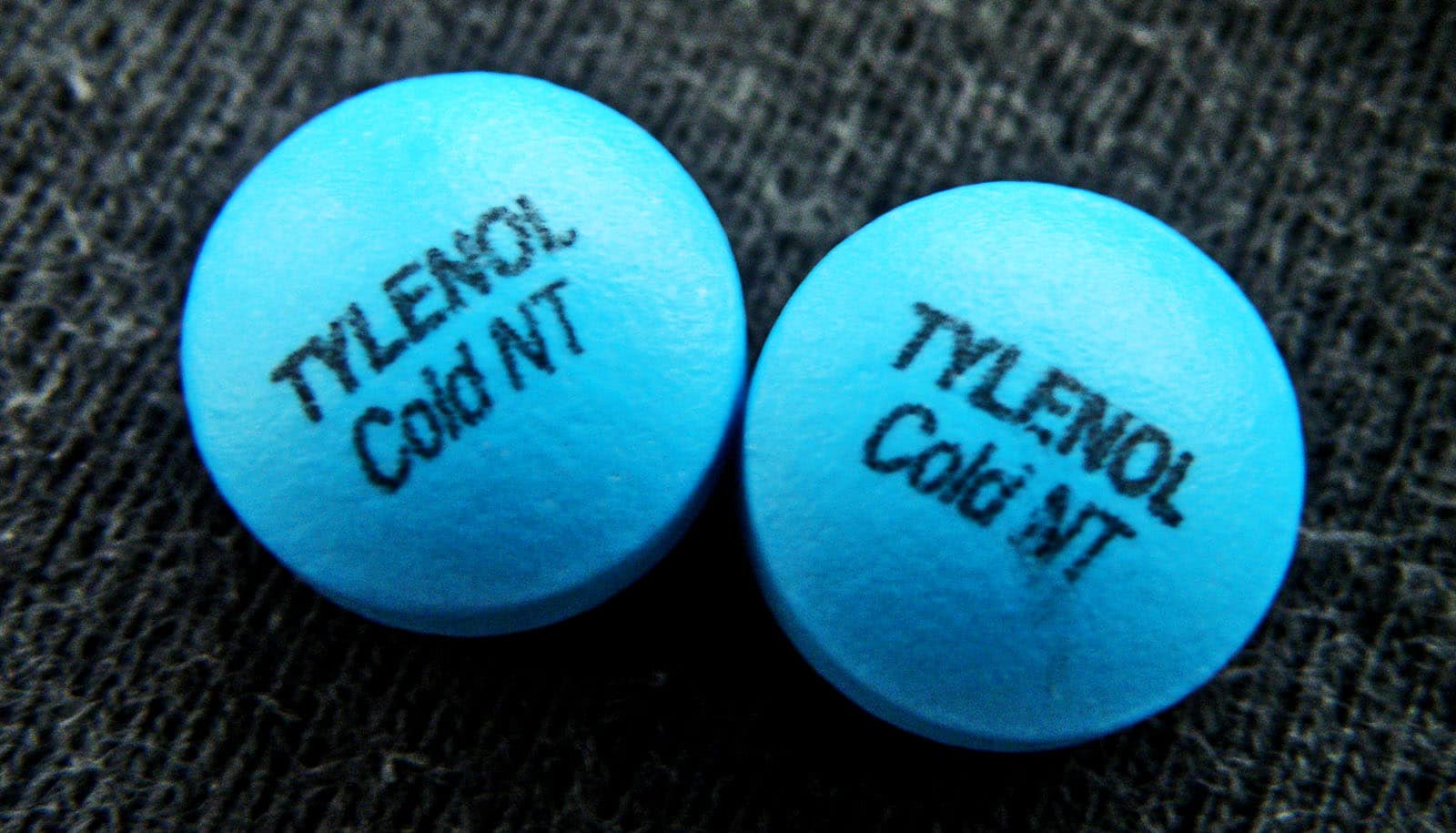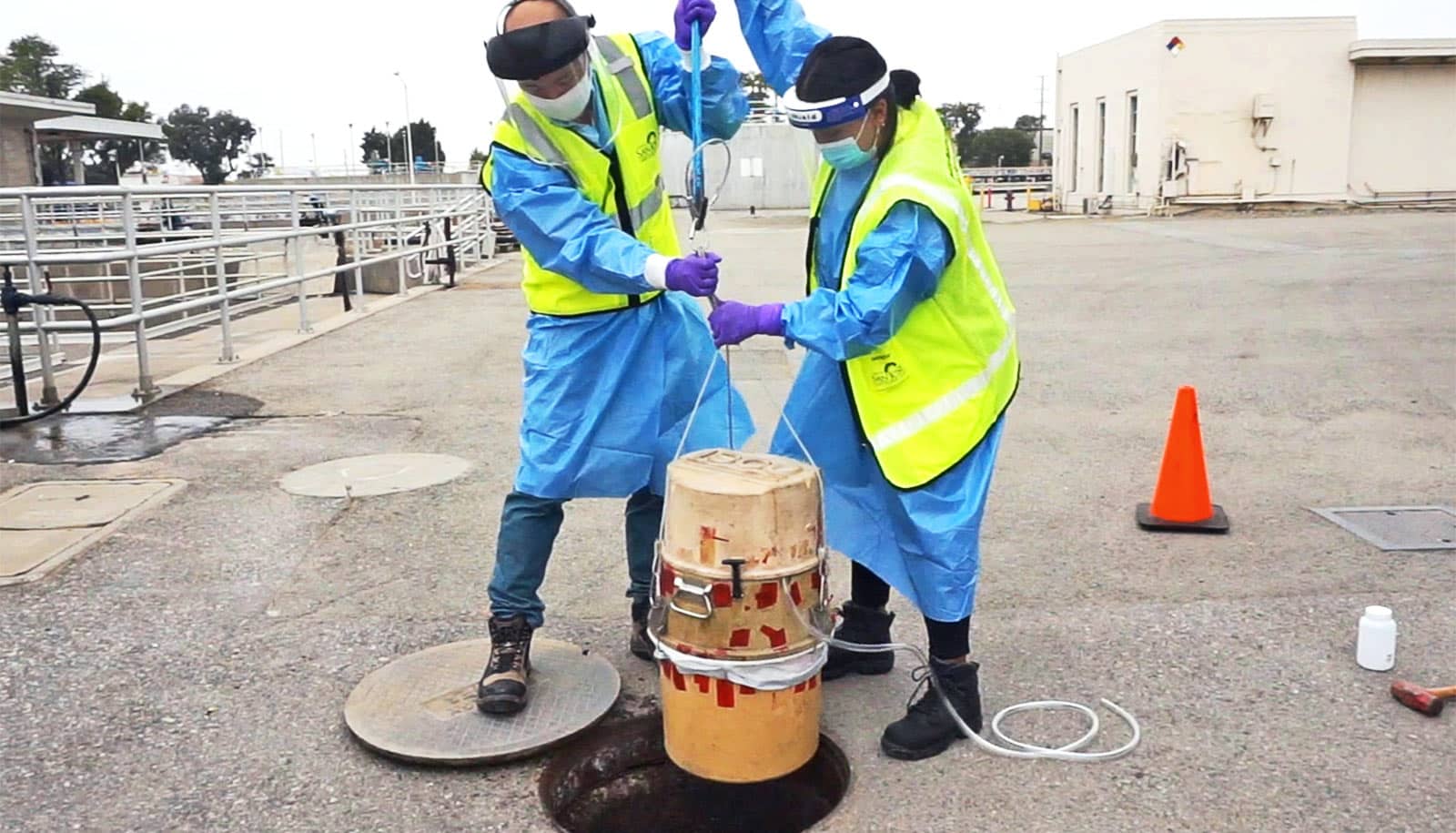In a pilot project exploring ways to monitor COVID-19, scientists hunted for pharmaceuticals, such as Tylenol, and viral RNA at the same time in wastewater in Western New York.
The results of their study, published in the journal Environmental Science & Technology Letters, suggest that measuring the concentrations of medicines in wastewater could add another layer to disease-monitoring efforts.
“Wastewater-based disease surveillance is being done worldwide through monitoring of viral RNA,” says lead scientist Diana Aga, professor of chemistry and director of the University at Buffalo’s RENEW Institute. “The potential of complementing existing efforts with detection of pharmaceuticals is exciting. There are a lot of opportunities here, though more research is needed.”
Acetaminophen spike
One interesting discovery in the new study involves acetaminophen, a pain reliever and fever reducer that serves as an active ingredient in over-the-counter medicines such as Tylenol, Theraflu, and other brands.
At all four wastewater treatment plants included in the project, the research found that acetaminophen concentrations in wastewater spiked before other measures of COVID-19 in the community in early 2021, including concentrations of COVID-19 viral RNA in wastewater and the estimated number of confirmed COVID-19 cases.
For example, at the Bird Island Wastewater Treatment Plant, which serves Buffalo and some surrounding suburbs, acetaminophen levels in wastewater spiked about two weeks earlier than levels of SARS-CoV-2 RNA in wastewater. The spike in viral RNA, in turn, preceded the spike in the estimated number of confirmed cases of COVID-19 by about a week, scientists say.
“Our biggest finding is that there’s a huge increase in the concentration of acetaminophen, which is used in over-the-counter drugs, that predates the peak of viral RNA in wastewater and the peak in clinical detections in our area during the study period,” Aga says.
“This was very interesting, as it suggests that detection of pharmaceuticals could act as an early warning of a potential disease outbreak in a community,” Aga says. “Our group is one of the first to complement detection of SARS-CoV-2 RNA in wastewater with the levels of pharmaceuticals.”
Wastewater data
Wastewater data is becoming a crucial part of monitoring COVID-19 as home testing has become more popular, leading to many positive cases going unreported.
During the pandemic, engineering researchers Ian M. Bradley and Yinyin Ye have been working with partners including Erie County to monitor COVID-19 viral RNA in wastewater.
The new study is exciting because it suggests that detection of pharmaceuticals could add another layer to such efforts, Bradley and Ye say. Their labs contributed data to the research, and they are coauthors of the paper.
Acetaminophen is not a perfect proxy for COVID-19: People take the drug to treat many types of pain, aches, and fevers, and some fluctuations of the medicine in wastewater over the study period did not correlate with viral RNA data.
However, the spike in acetaminophen that did seem to match up with the local COVID-19 wave was large, and this finding points to use of over-the-counter medications as a potential early signal of a looming outbreak, the researchers say.
“What’s really exciting is that there’s so much information in wastewater. How can we use this to track diseases for public health? All of these data are complementary,” says Bradley, assistant professor of civil, structural, and environmental engineering in the UB School of Engineering and Applied Sciences, and a core faculty member in the UB RENEW Institute.
“We’re focusing on wastewater public health studies, and we want to see if we can integrate more data to get an idea of what’s going on in the community,” says Ye, assistant professor of civil, structural, and environmental engineering, and RENEW faculty affiliate. “We can pull out information from wastewater, but there are still a lot of unknowns about how to interpret the data for public health. We want to test not just biological markers, but also chemical markers and all sorts of different layers of information.”
In addition to identifying the spikes in acetaminophen, the study found residues of prescription medications associated with the pandemic in wastewater, including drugs whose emergency use authorization for treating COVID-19 has been revoked by the US Food and Drug Administration.
The research, conducted over several months in 2021, had funding from the US National Science Foundation and the SUNY Prepare Innovation and Internship Program.
Source: University at Buffalo


